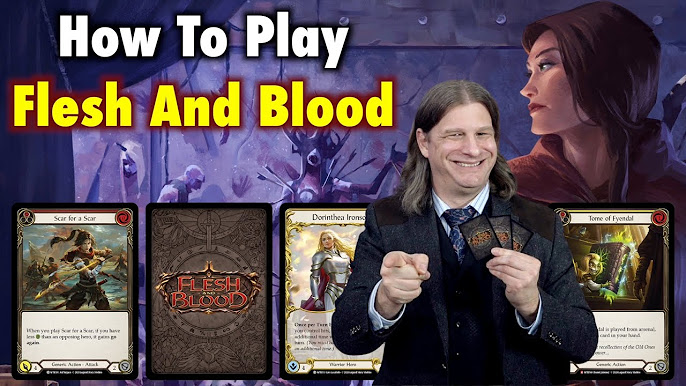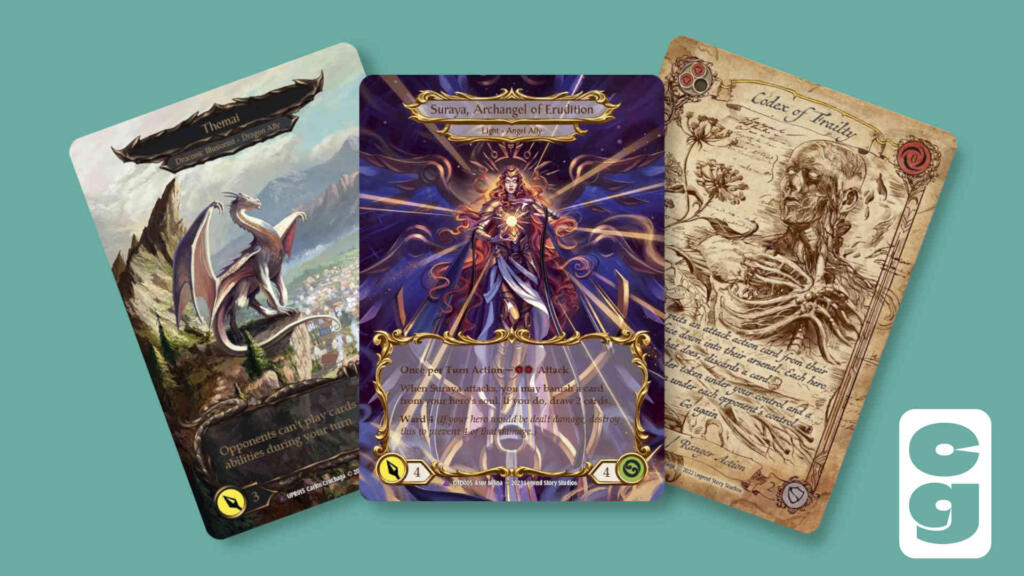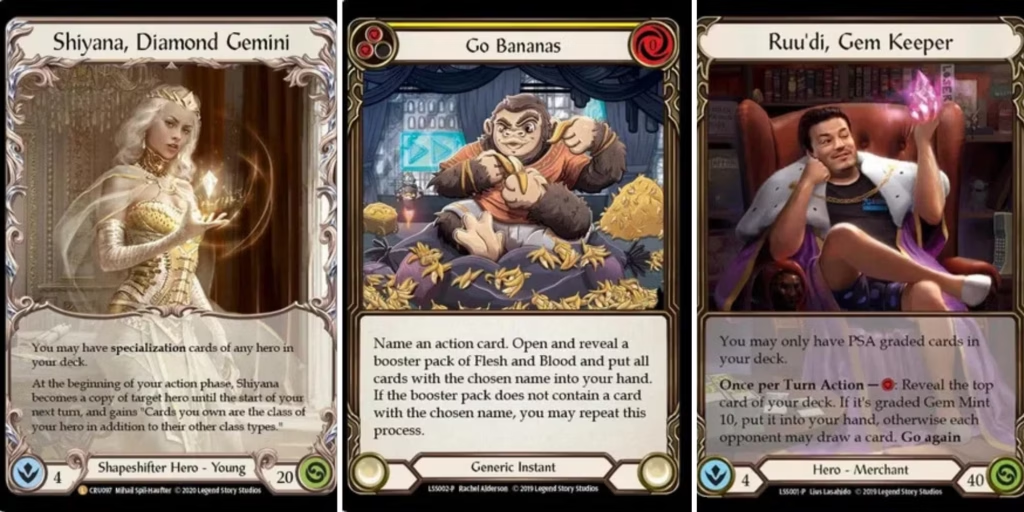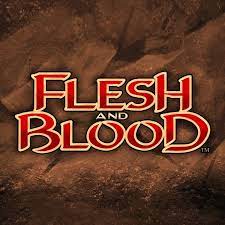Table of Contents
Flesh and Blood is a trading card game (TCG) created by Legend Story Studios and released in 2019. It emphasises physical, face-to-face play and strategic depth. The game has grown steadily among competitive card players who appreciate its tactical gameplay and focus on resource management. Unlike many TCGs centred on digital play, Flesh and Blood is designed primarily for in-person matches.

Introduction to Flesh and Blood TCG
At its core, Flesh and Blood TCG is centred around heroes, each representing a class like Warrior, Ninja, or Illusionist, who engage in one-on-one battles using customised decks. Players manage attacks, defence, and resources carefully to outplay their opponents. Cards can serve multiple purposes: as attacks, blocks, or resources, which requires thoughtful decision-making every turn. Each hero’s abilities and weapon choice influence deck construction and playstyle, making knowledge of your hero and matchup essential. Similarly, players interested in diverse card game experiences might find it worthwhile to learn more about the Korean version of Uno at uno-rule.com. It offers insight into how different mechanics and strategies shape gameplay, reflecting the strategic complexity also present in Flesh and Blood.
Building a Competitive Deck
Deck construction in Flesh and Blood centres on the hero card and includes a mix of class-specific and generic cards. Deck size varies by format, but Classic Constructed decks typically have up to 80 cards, including weapons and equipment. Balancing attack actions, defence reactions, and resource generation is key.
Cards come in three “pitch” values—red (1 resource), yellow (2 resources), and blue (3 resources)—which affects how you manage your hand and tempo. For example, a Guardian deck might rely on blue-pitch cards to fuel powerful attacks like “Spinal Crush,” but also needs red-pitch cards for reliable offensive pressure. Achieving this balance ensures consistent play and adaptability during the match.
Tips and Strategies
Understanding when to block or absorb damage is fundamental. Over-blocking can limit your offensive options, so each card’s use must be carefully weighed in the context of both immediate threats and longer-term plans. Pitch stacking—planning which cards to pitch over multiple turns to generate resources efficiently—is vital, especially since decks cycle in Classic Constructed format, and hand management greatly influences tempo and card availability.
Matchup knowledge also matters significantly. Against aggressive heroes like Fai or Katsu, controlling tempo and preserving armour can provide an advantage by allowing you to absorb bursts of damage while maintaining your offensive pressure. Versus control-focused decks such as Oldhim, applying efficient pressure and forcing your opponent to use resources to defend can be more effective than simply playing more cards. Recognising your opponent’s deck archetype early helps tailor your playstyle to maximise your chances of success.

Advanced Strategies
At higher play levels, timing, and card synergy become crucial. Cards with on-hit effects, such as “Command and Conquer,” disrupt opponents by destroying key resources and are best played with precision to maximise impact. Equipment management is also important, as armour blocks damage only once per game. For instance, “Crown of Providence” blocks damage and cycles a card, which can help improve your hand at critical moments, providing both defence and card advantage.
Fatigue strategies—aiming to exhaust the opponent’s deck—can also be effective. Control decks use blocking and pitching carefully to survive longer and win through attrition. This approach requires detailed tracking of cards played and resource management across multiple deck cycles, demanding strong focus and planning throughout the match to avoid running out of options.

Buying Flesh and Blood TCG Cards
Cards are available as booster packs, boxes, or singles from local stores and online vendors. Buying singles is often the most efficient way to build specific decks. Core sets like “Welcome to Rathe” and “Arcane Rising” provide foundational cards for many heroes, while newer sets introduce new classes or expand existing ones.
Knowing which sets contain cards for your hero is important to avoid unnecessary purchases. For example, Illusionist class cards mainly appear in “Monarch” and “Uprising,” making those sets key for players building Prism or Dromai decks.
Collectors may seek rare “cold foil” or “rainbow foil” cards, which have aesthetic value but do not affect gameplay. Competitive play does not require foils, so buying standard cards is sufficient for most players.
FAQs
Are Flesh and Blood TCG beginner-friendly?
The game’s rules are detailed but manageable with practice. New players may find the resource and card use systems unfamiliar at first. Starter decks help beginners learn without building a deck from scratch.
What are the main formats in Flesh and Blood?
The main formats are Classic Constructed, Blitz, and Draft. Classic Constructed uses larger decks and a broad card pool for competitive play. Blitz offers smaller decks and faster matches, making it accessible to new players. Draft involves building decks on the fly from booster packs during an event.
Can I play Flesh and Blood TCG online?
There is no official digital platform for Flesh and Blood. The game is designed for in-person play. However, players sometimes use webcams or unofficial tools to play remotely or practice online with others.




